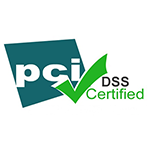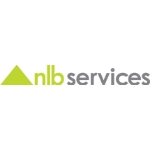© 2025 Next Level Business Services Inc. All Rights Reserved.
Recruiting for Remote Work: Strategies for Building a Successful Distributed Workforceted workforce.
By NLB Services
With the rise of remote work, the workforce dynamics have changed significantly over the recent years. Companies are shifting towards distributed teams, recruiters are evolving their strategies to attract and retain top talent under the new settings. In contrast to traditional hiring, remote recruitment requires a keen eye on skills, autonomy, and adaptability rather than geographical proximity. Recruiters must master remote hiring to tap into a diverse talent pool and build high-performing teams. In this blog, we will explore essential strategies to ensure seamless and effective remote recruitment strategies to build a successful distributed workforce.
Building an Effective Remote Hiring Process
For Effective diverse teams, you need to onboard the talent that is efficient, dedicated and adaptive while working with distributed teams. For identifying the right remote candidates, a structured and contemplated hiring process is crucial. Let’s look at how to build an effective remote hiring framework:
Tailoring Job Descriptions for Remote Jobs
Tailor the job descriptions for remote jobs by clearly outlining expectations, required skills, and work environment specifics. It is a good idea to highlight important aspects such as flexibility, required tech proficiency and communication skills, etc. needed for the job. Job descriptions should focus on the skills and results expected from the candidate rather than their physical presence in the office.
Streamlining Interview Process
The interview process must be streamlined to get the best possible outcome without wasting much time of the candidate. Leverage video interviews, online assessments, and technical evaluations to evaluate candidates effectively. It is a good idea to use a virtual panel for an interview to assess candidate’s ft within the team culture and their technical abilities.
Use Digital Tools
There are numerous digital tools that you can utilize to make your hiring process efficient like utilizing an applicant tracking system (ATS), AI-driven screening tools, and collaborative hiring platforms.
Maintain Clear Communication
Candidates must be kept informed throughout the hiring process with timely feedback and updates on a regular basis. Offer virtual office tours and insight of team meetings to allow candidates to visualize their potential work environment in remote settings.
Finding Top Remote Talent
When hiring a workforce whether remote or onsite, finding top talent is crucial, it becomes more challenging when you are doing remote hiring. The success of remote hiring depends on sourcing candidates from the right channels backed by strategic decision-making. Below are some effective remote recruitment strategies that can help you find top remote talent:
Looking Beyond Traditional Job Boards
Traditional job boards may not cut it when it comes to attracting the best remote talent as most of the talented folks are already employed and not actively searching. Utilize global job boards, niche communities, industry-specific forums, and professional networks to discover passive candidates. Partnering with specialized recruitment agencies can also enhance the reach and effectiveness. Some of the global job boards that you can consider are LinkedIn, We Work Remotely, and Remote.co, Flexjobs, and more.
Showcase Positive Company Culture
Work towards making robust employer branding through different channels to highlight your organization is a great place to work for remote workers. Candidates, when they see that the organization values its employees, are more prone to high engagement at work with high productivity.
Utilize Tech for screening and Interviews
Leverage ATS tools to filter applications based on your specific skills, experience, and requirements. Have thorough assessments in place that can replicate real-world remote work scenarios to assess communication skills and problem-solving skills. Similarly, when hiring for a distributed workforce, virtual interviews should be conducted through conferencing and panelists. Assess the technical skills and cultural fit of the candidate.
Promote Flexibility and work-life balance
Work-life balance has become pretty important for the workforce. 40% of remote workers struggle to unplug from work and cite it as the biggest challenge of remote working. Have policies that promote flexibility, ditch rigid clock-in and clock-out times, and give them the time they can utilize in their lives for something else other than work.
Build a Strong Employer Brand
In today’s competitive edge, candidates are carefully choosing the organizations with who they would work. They look for employers who offer flexibility, and work-life balance perks other than monetary ones, value their skills and invest in their professional development. Highlighting a company culture that encompasses it all is something that organizations should look forward to. Try to highlight your company culture that supports remote work through different channels such as social media, employee testimonials, and dedicated career pages.
Evaluating Remote Candidates: What to Look For
The decision to finalize the right remote talent is based on multiple assessments and thorough evaluation. It is not just technical skills but remote work requires distinct qualities as well such as:
Self-Motivation and Discipline
Candidates who are self-motivated are best to work with in a remote environment. Candidates with a proven track record of working individually, on time project completions, meeting deadlines and managing workloads at individual capacity can be a good fit when hiring for distributed teams.
Stronghold on Communications
When you work in a remote environment, you have to communicate often with different teams and different formats. For the same reasons, remote hiring candidates should be adept at written and verbal communication to make sure that the communication is smooth and collaboration is effective.
Problem-Solving Skills and Adaptability
Often, remote candidates would be working and finishing tasks in an individual capacity, and since they work across different time zones and cultures, which is why it is important that remote teams have adaptability. They need to have a critical thinking and problem solving attitude so that the harmony and sync in work continues even when hurdles are faced.
Collaboration and Teamwork
The biggest challenge while working with remote teams is the lack of collaboration and teamwork as working and meeting virtually with team people may be less impactful instead of meeting someone physically. To assess a candidate’s willingness and teamwork strategy try asking questions like “How do you contribute to a team’s success when working remotely?” or Describe your experience collaborating with team members across different time zones?”.
Onboarding Remote Employees
Once you have hired the remote candidate successfully, it is time for their onboarding. Unlike traditional onboarding where employees get the chance to see the office and experience it first hand on the first day, remote onboarding is all about effective delivery of the expectations while ensuring the employee feels engaged and connected with the organization. HR needs a well-structured onboarding process to ensure that the remote employees are up for success and understand whatever is needed. Here are some practices that you can incorporate to ensure a well-planned onboarding of your remote employees:
Create a Comprehensive Onboarding Plan
Be sure to get the necessary documents, reading material, welcome kit, and tools ready in advance so that when the employee’s onboarding begins, he has everything that is required for him to start with. You should plan your steps such as when to introduce the team members, what are the organization’s mission, values, policies, do’s and don’ts, etc.
Ensure everything is in Place in Advance
Before initiating the onboarding, take some time and check that all necessary IT tools and material at your end (connection, laptop, software access, etc.) are up and running at your end and check with the employee as well for the same. This will ensure that you do not face any hurdles mid-way during the onboarding process.
Utilize Digital Collaboration Tools
For remote onboarding, using the right collaboration tools is necessary for a smooth transition and hassle-free onboarding experience for HR and employees. Tools like Slack, Trello, and Zoom are useful in remote environments as they facilitate seamless integration and communication.
Encourage Inclusion and Connection
Onboarding is not a one-day process, to make employees feel comfortable and connected with the process and organization, encourage them to feel free to connect if they face any hassle, organize virtual meet-and-greets, motivate them to participate in online forums and ensure open communication culture.
Challenges of Remote Recruitment
Managing a remote workforce is not at all easy, while hiring for remote employees recruiters face multiple challenges that are different from traditional hiring practices. Below is the list of some challenges that recruiters face and how you, as a recruiter or hiring manager, can overcome these:
Different Time Zones
When hiring remote employees from different countries, syncing with the time zone becomes really hard. Schedule flexible interviews or interviews where both the recruiter and the candidate can be available without challenge. Sometimes, it may also overlap with personal times, candidates need to be flexible in this for better collaboration.
Communication Barriers
Many times, when hiring from a different country, continent or state, you may face communication barriers with the candidate. Ensure candidates are skilled well in the main business language, it is always a good idea to ask upfront and ask questions in the language in which you want the candidate to communicate at the job. At the same time, since remote job require a lot of communication and collaboration digitally, ensure that they are comfortable using them and are not alien to digital tools.
Lack of In-Person Interaction
When candidates are interviewed remotely, it gets harder to judge the candidate through its body language, since there is no in-person interaction happening, recruiters need to be sharp as well as considerate as they assess the candidate during the interview. Make sure that you make the candidate feel comfortable before starting the assessment and do regular video check-ins post-interview as well to ensure interpersonal connect.
Retaining Remote Employees
The journey of HR does not stop when a candidate is hired and onboarded, rather it is a continuous run to ensure that the candidates who are hired remotely stay with the organization, not just the new ones but the whole workforce that is working remotely. Attracting top remote talent is just the beginning, and retaining them becomes equally important since a lot of time, effort, and resources are used to get them onboard.
For the same reasons, here are some suggestive practices that you can use to ensure your workforce stays engaged with you for as long as possible:
Ensure Open and Transparent Communication Channels
Regular communication and checking-in is key while working in a remote environment. Make sure that your employees are able to reach the right channels when they need them. The lower they communicate, the higher the chances of them getting disengaged. To avoid such situations, guide the employees to open up and communicate when they face any challenge or roadblock.
Build a Supportive Culture
Similar to an on-site working environment, remote workforce also require a culture that supports them and encourages them to work as a team. As HR, it is important to ensure that teamwork is encouraged in the organization through virtual events, recognition programs and mentorship initiatives. Come up with new activities and sessions that can be done remotely to keep employees engaged.
Offer Flexibility and Benefits
In remote work environments, it often gets hectic for employees to stay hooked to the screens and work in isolation. Offerings like flexible working hours, wellness programs, and home office stipends add a unique touch of value for the employees. Also, channelize career growth opportunities for remote workers to enhance job satisfaction.
Conclusion
Changing times need different tactics and strategies. The same is true when it comes to recruiting remote workers as it requires a strategic shift in the hiring approach. Recruiters need to leverage digital tools, openness to flexibility, and willingness to work with different cultural fits. By implementing the right steps in the hiring process you can attract the best remote talent that can enhance your organization’s productivity and success.
Remote candidates must be self-motivated and have a problem-solving attitude in order to be fit to work with different team members remotely. While all this is true, it is also crucial to note that there are unique challenges that remote hiring possesses such as differences in time zone and communication barriers. Recruiters must continue to evolve and refine their remote recruitment strategies to stay ahead in attracting, onboarding, and retaining top-tier remote talent.
Talent Solutions








